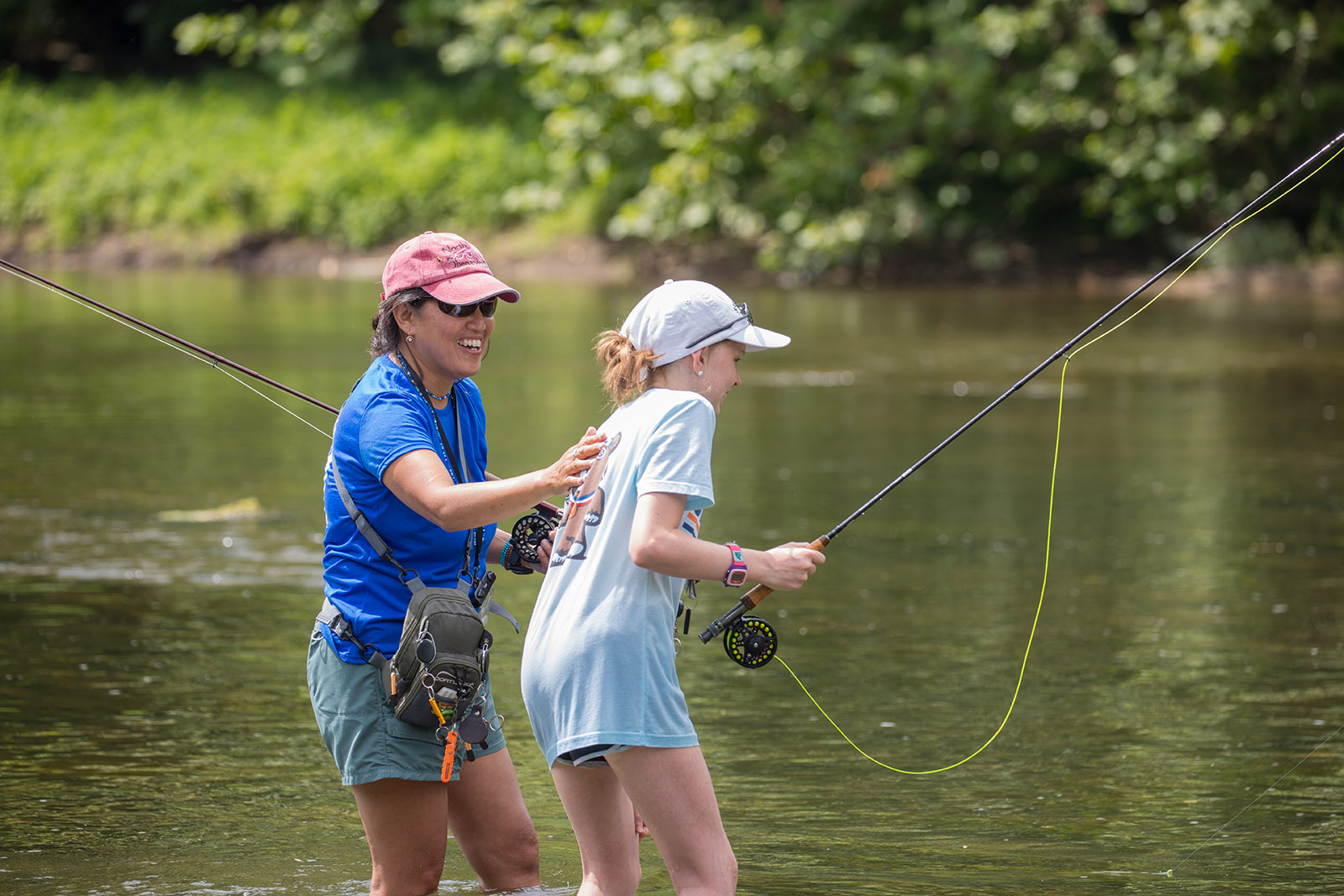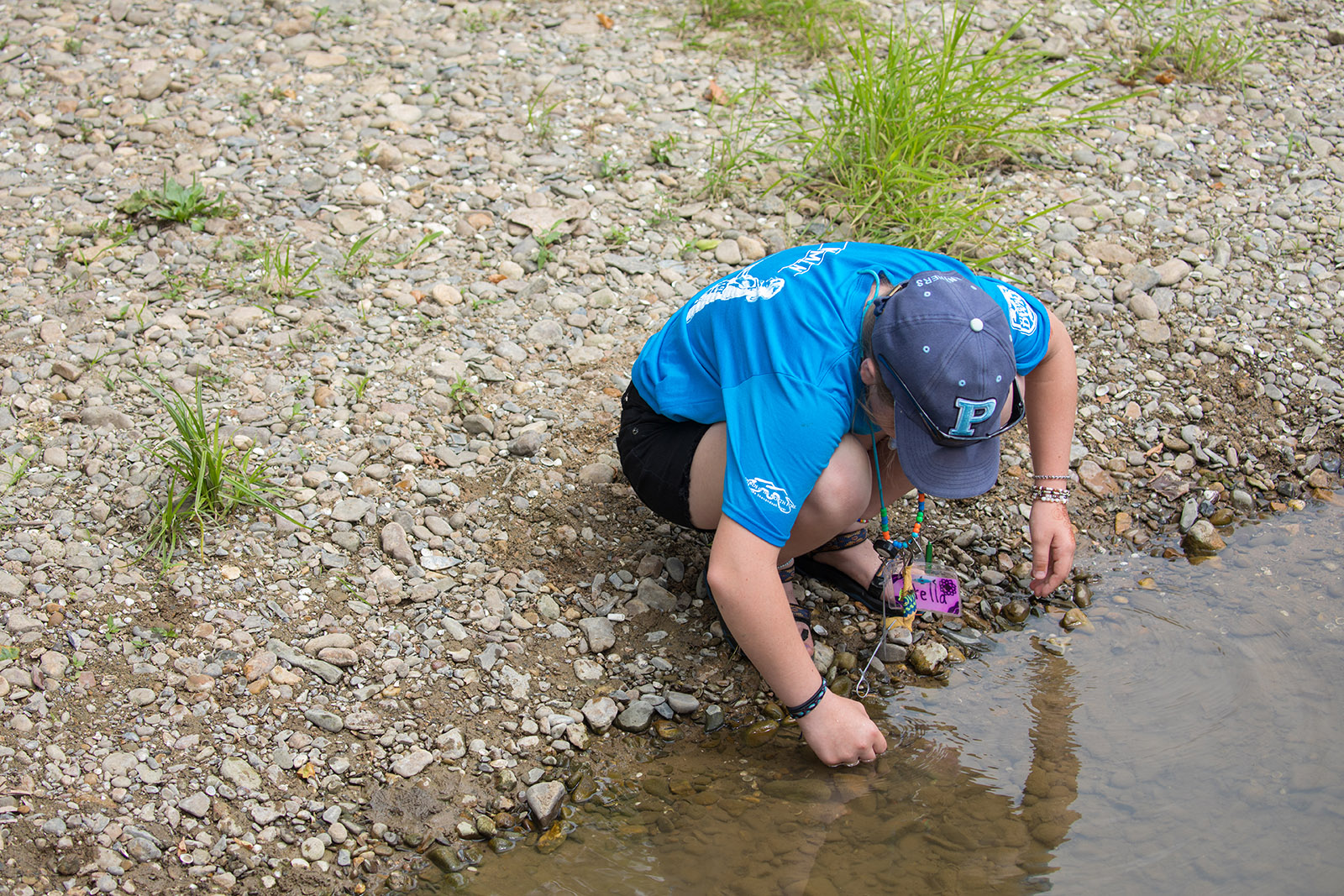By Gerald Almy
Photos by Meghan Marchetti/DWR
Anglers fly fish for a wide variety of species in Virginia, pursuing bluegills to muskies with artfully crafted flies and tackle ranging from delicate three-ounce rods to hefty 10-weight outfits that will tackle giant stripers and pugnacious bass. Despite the interest in varied species, trout remain the most popular gamefish for the long-rodder.
Many pitfalls await the newcomer to fly fishing, even after you get the basic back-and-forth stroke mastered. Here are eight common fly fishing mistakes that can hurt your chances for enjoying a productive and enriching day on the stream.
What gives me the authority to write on this topic? I’ve committed them all, many times over! Hopefully, knowing what some of these flub-ups are in advance will help you avoid making them.
- Starting with trout. Yes, we mentioned above that trout are the most popular gamefish among Virginia fly fishermen. But you will do yourself a favor by starting fly fishing for more forgiving, easy-to-catch fish like river smallmouths, bluegills, rock bass, and redbreast sunfish.These fish are not as skittish as trout. They can be approached closer, making short casts effective. They aren’t as persnickety about the fly you present to them, either, often nailing a simple sponge spider with rubber-band legs or grasshopper fly with gusto. They put up a fun fight, and most importantly, build confidence that will carry over as you move on to trout.And when you do make that move…start with a stream stocked with trout by the Virginia Department of Wildlife Resources (DWR) before moving on to wary wild trout.
- Not getting help. Learning on your own is fine for some things, but for fly fishing, it’s often better to sign up for a fly-fishing class. There are many opportunities for these throughout the state. Information about these can often be found on the internet. As an alternative, ask a friend or relative or even casual acquaintance who fly fishes to give you instructions.

If you choose to teach yourself, do yourself a favor spend some time on YouTube to study. Books and articles can also teach the basics.
- Trying to cast too far. You might see experts on those YouTube and social media clips casting 60 or 80 feet of line as they show off their talent. Don’t try to imitate them. In time you may learn to cast that far. But there’s no need to ever cast more than 30 or 40 feet to catch any trout in a stream. You just need to make the cast land on the water’s surface softly so that the line and fly don’t scare the quarry. This mistake leads us to flub-up number….
- Not approaching the water cautiously enough. Sauntering casually up to a stream’s edge is a common mistake among beginners. Even some veteran anglers fail to show enough respect for the wariness of trout.A cautious approach is best for all gamefish, but it’s especially important for trout. Rushing to the water’s edge will spook every brown, brook, and rainbow in sight, sending them scurrying wildly under rocks or into riffles. You can forget about catching these fish for at least a half hour. Instead, stay back 30 to 50 feet from the water’s edge and see what you can discern at that distance. Then slowly ease up carefully toward the water.At times there will be trout right next to the bank in the area where you plan to fish. With luck, you can catch these fish by casting from far back so the fly lands over them just inside the stream’s edge. This is often where terrestrial-feeding trout will lie. You’ll spook all of those by walking casually up to the stream’s edge. Hunch over to lower your silhouette if possible. Even kneeling is sometimes helpful to avoid spooking fish. Dapping the fly without even casting is another option.
Often it’s possible to stay out of the water and fish the stream from shore. This is the least alarming approach of all. If you do need to or want to wade in, move slowly so you don’t push waves towards the fish. Avoid scuffling rocks as you wade. Move stealthily, like a cat stalking prey.
- Not checking what the trout are feeding on. This is sometimes hard to do after a long time away from the water. We’re all anxious to wade in, start casting, and feel that first fish on the line. But it’s a mistake. Study the water’s surface from a distance. If a hatch is coming off, it will be obvious as you see trout rising and mayflies or caddis emerging. Then you can try to catch a specimen with a small fine-mesh net or your hand and duplicate it as close as possible.

Often, though, aquatic insects will be scarce. In this case, it’s important to check bushes and grass along the banks for terrestrial (land) insects that are particularly prevalent such as grasshoppers, crickets, beetles, ants, or inchworms. If any one of these is more abundant than others, chances are it will pay to imitate that bug with the closest pattern you have in your fly boxes.
- Don’t feel locked-in to imitating a hatching insect or an abundant land insect. Yes, it pays to know what’s most abundant. But trout living in most Virginia waters are not as selective as those in a western river or limestone stream in Pennsylvania.Chances are they’ll nab any tasty-looking bug they see. Imitating things such as ants, beetles, and hoppers can often be productive whether any of them is particularly abundant or not. Also keep in mind the tip of dropping these with a tiny “plop”or “splat” on the water to draw the fish’s attention to the fly. So yes, it is good to know what’s abundant on the stream’s surface or along the water’s edge, but don’t feel constrained to always imitate that insect.
- Using tackle that’s too heavy. This can be a hindrance both to your enjoyment of the sport of fly fishing and your catch rate. Most trout in Virginia will run in the six- to 14-inch range. Streams are also often small, with a few exceptions such as the Jackson River. Choose an eight-to nine-foot rod in the three to five weight class. Match that with a 7 ½ to 12-foot tapered leader, ending with a 5X-7X tippet. A light tippet will keep drag to a minimum and allow a natural presentation of the fly, but it will also increase the need to be careful to avoid mistake number….
- Striking too hard. With a light tippet, you’ll need to set the hook with care. Just a gentle lift of the rod while keeping the line taught with your fingers is all that’s required. Sometimes pulling back with the line in your left hand (for right-handed anglers) is helpful, but easy does it! Nothing is more heart-breaking than finally coaxing a large trout into striking and popping him off with too hard of a hookset.
Don’t make that mistake—and the other seven listed here—and you’ll be well on your way to enjoying the enriching experience of fly fishing Virginia’s stocked and wild trout streams and rivers.


